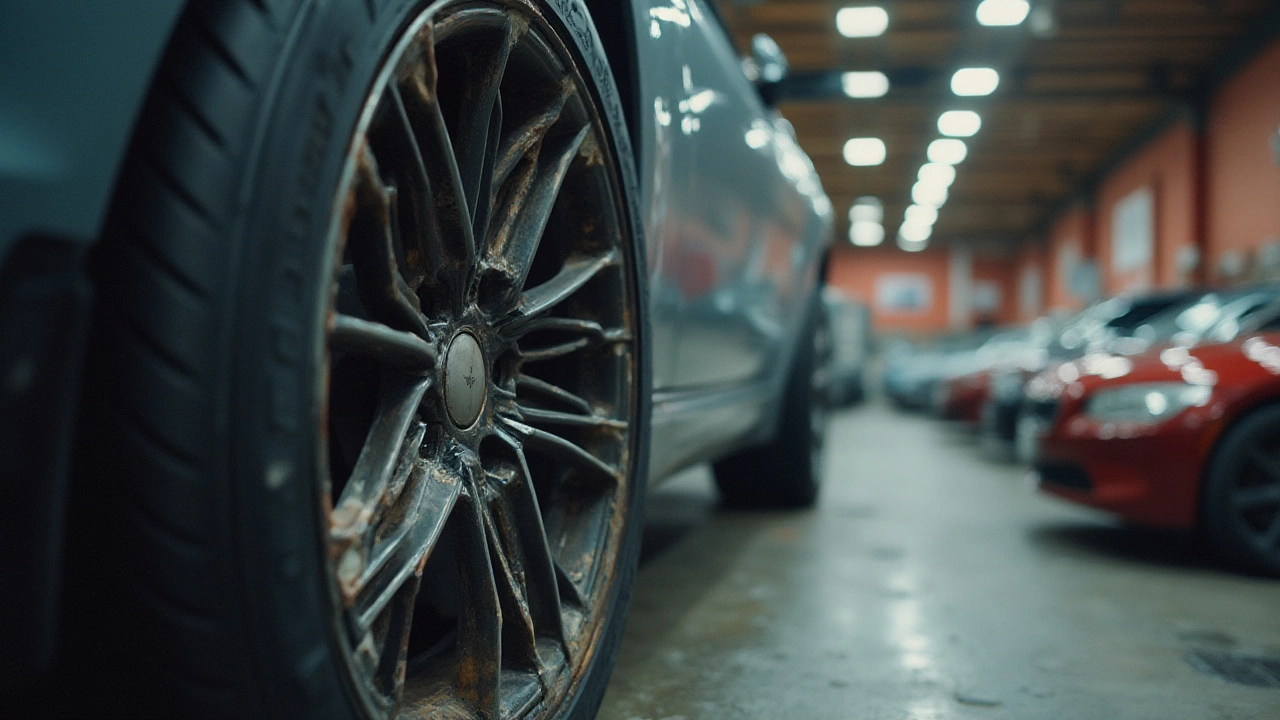Alloy Rims Disadvantages: What Car Owners Need to Know
- Gareth Westbrook
- 22 07 2025 Wheels and Tires
Alloy rims aren't all they’re cracked up to be. Get the real scoop on common problems, hidden costs, and tips for keeping your wheels in top form.
If you’re eyeing shiny alloy rims for your ride, you’re not alone – they look great and can boost performance. But they’re not a free‑for‑all win. Below we break down the real downsides so you can weigh the pros and cons without guessing.
Alloy wheels are pricier than steel or iron alternatives. A set can cost a few hundred to over a thousand pounds, depending on brand and finish. When a curb hits or a pothole hits hard, alloys crack, bend, or suffer cosmetic chips. Repairing a cracked rim often costs as much as buying a new one, and many insurers treat alloy damage as a total loss.
Despite the “alloy” name, many wheels are made from aluminum‑based mixtures that can corrode if the protective coating gets scratched. Salt on winter roads, road grit, and even harsh cleaning chemicals break down that coating, letting rust spread underneath. Over time, corrosion weakens the wheel’s structural integrity and makes it look shabby.
Another hidden issue is heat buildup. Alloy conducts heat better than steel, which can be an advantage for brake cooling, but it also means the wheel can expand more under hard braking. That expansion can lead to warping, especially if the wheel’s design is thin or the brake kit is oversized.
Alloy rims are also lighter, which improves handling, but the lighter weight can make them more prone to cracking under extreme stress. Off‑road driving, aggressive cornering, or hitting deep potholes can cause cracks that aren’t always visible from the outside.
Maintenance demands are higher, too. Keeping an alloy rim looking fresh means regular washing, drying, and occasional polishing. Using the wrong cleaning product (like acidic wheel cleaners) can strip the coating and speed up corrosion. Many owners end up spending extra on specialised wheel‑care kits.
Fitment is another practical hurdle. Not every alloy rim fits every car. You need to match bolt pattern, offset, and load rating precisely. A wrong fit can cause uneven tyre wear, steering pull, or even suspension damage. Checking the specifications before buying can save headaches later.While many drivers love the aesthetic, the glossy finishes can hide small dents or cracks until they become serious. A tiny hairline crack can grow under repeated stress, eventually leading to a sudden rim failure at speed – a scary scenario for any driver.
Finally, resale value isn’t always guaranteed. If you’ve kept the rims in perfect condition, they may retain value, but any sign of wear, corrosion, or repair work drops the price dramatically. Buyers often prefer new stock over a used set with a questionable history.
All in all, alloy rims bring style and performance, but they come with notable drawbacks – cost, corrosion risk, maintenance needs, and potential safety concerns. Knowing these issues helps you decide if the appeal outweighs the extra effort and expense.
Before you splurge, consider how you drive, the climate you live in, and how much time you’re willing to spend on upkeep. If you’re okay with the extra care and budget, alloy rims can still be a great upgrade. If not, a solid steel wheel might give you peace of mind without breaking the bank.

Alloy rims aren't all they’re cracked up to be. Get the real scoop on common problems, hidden costs, and tips for keeping your wheels in top form.